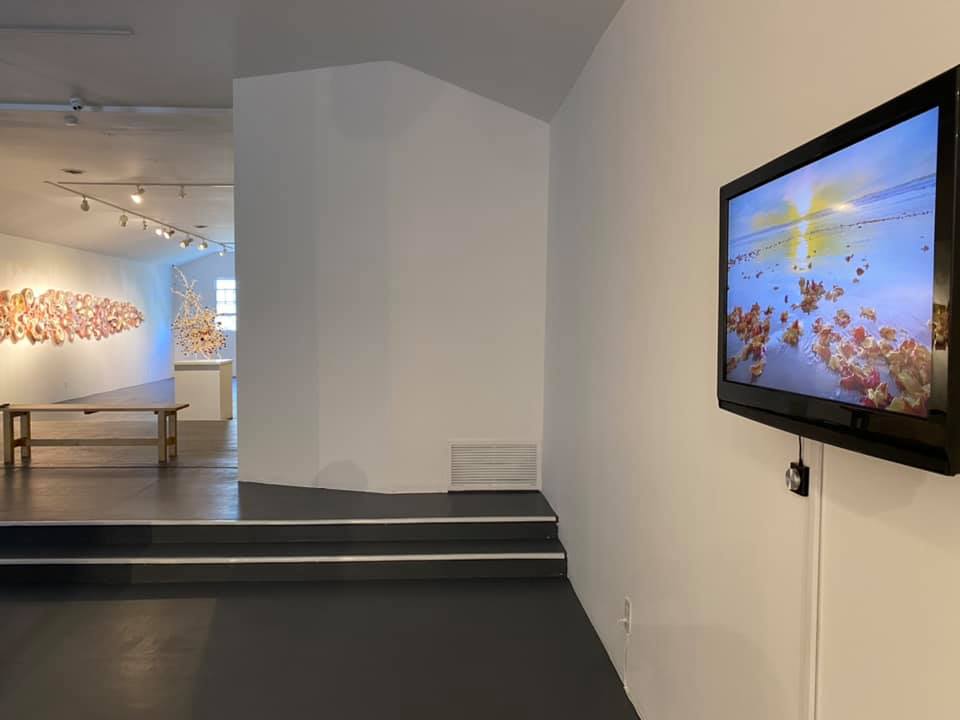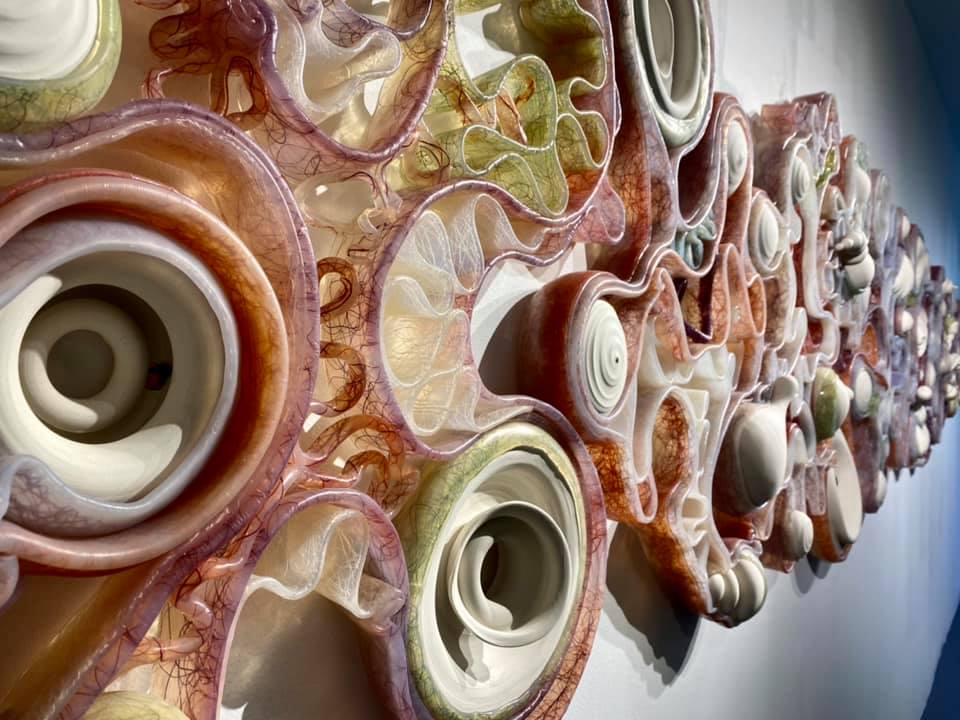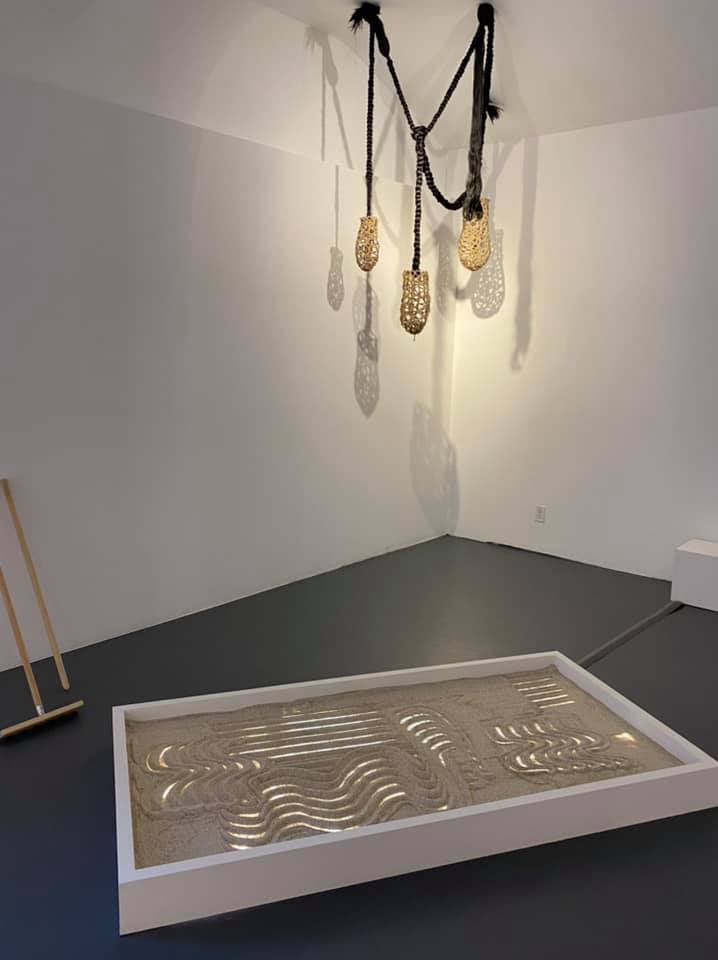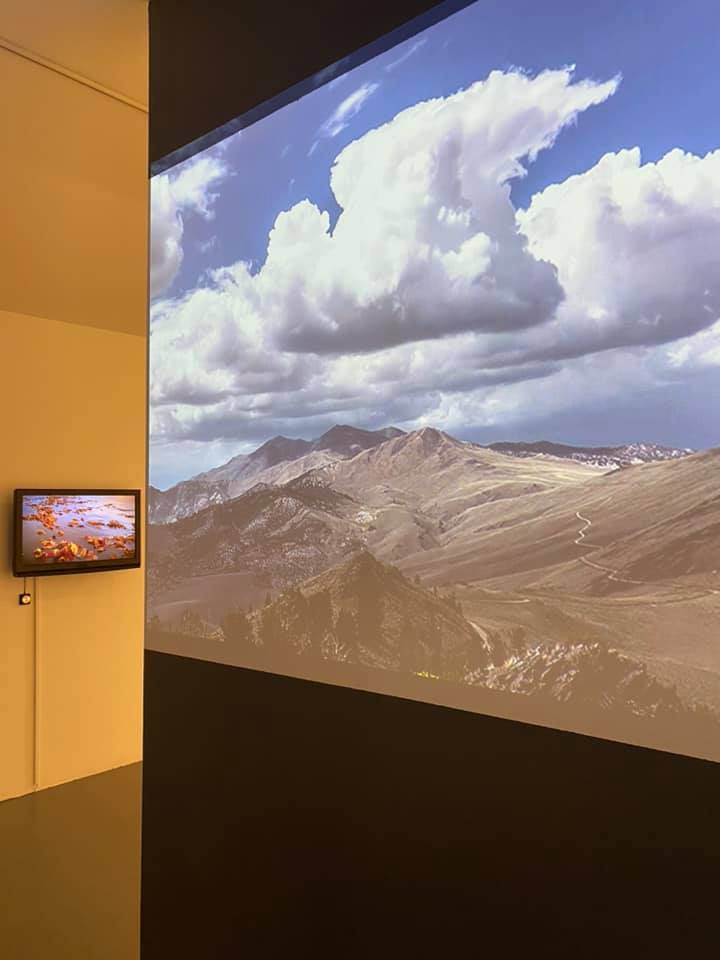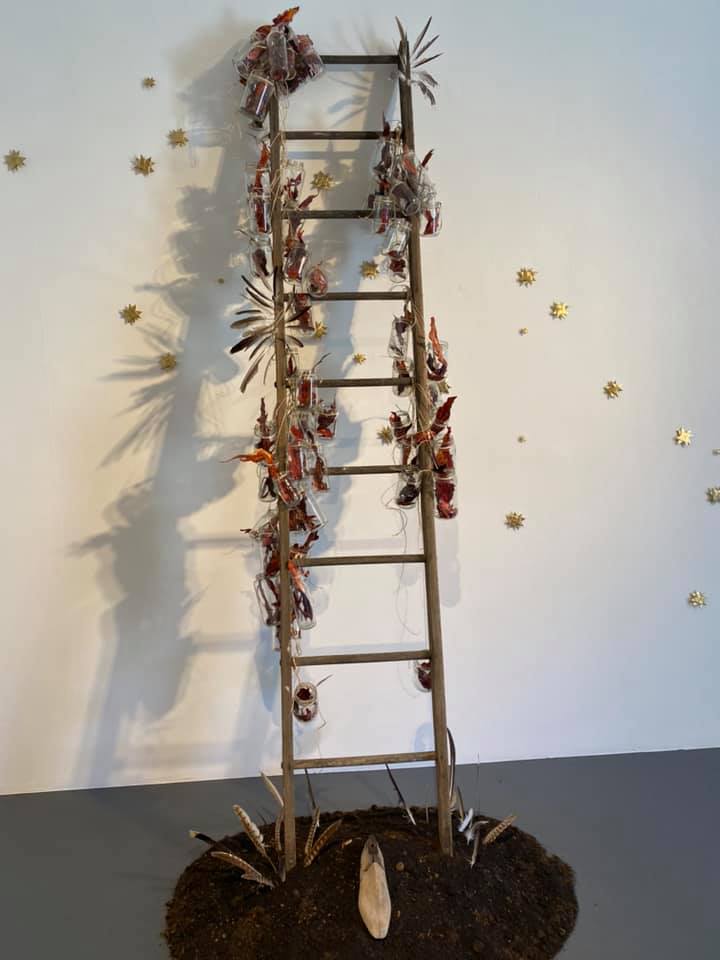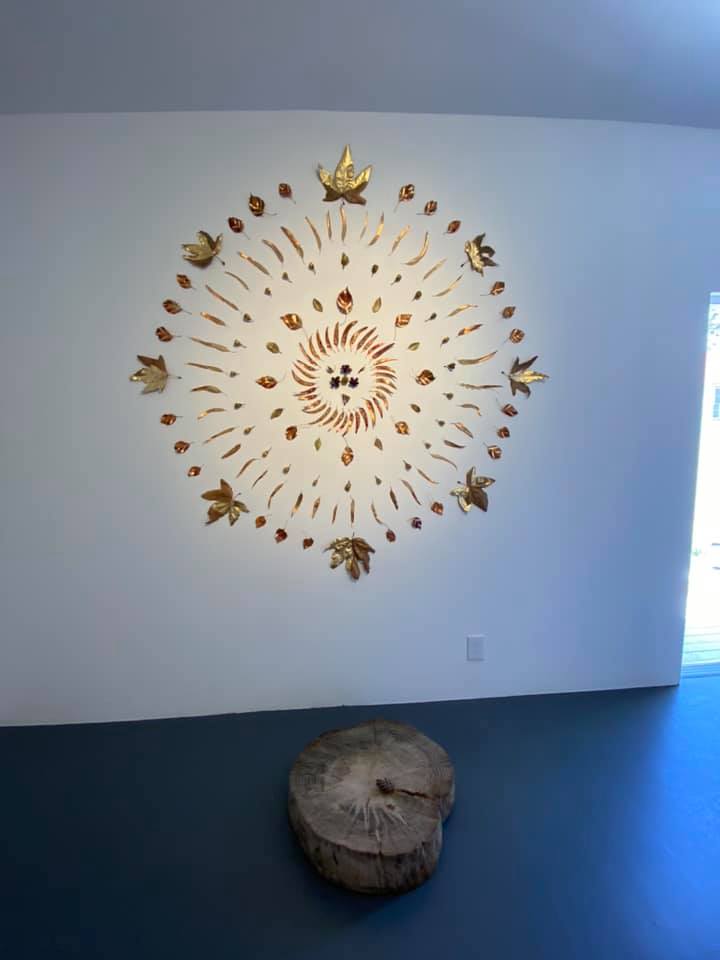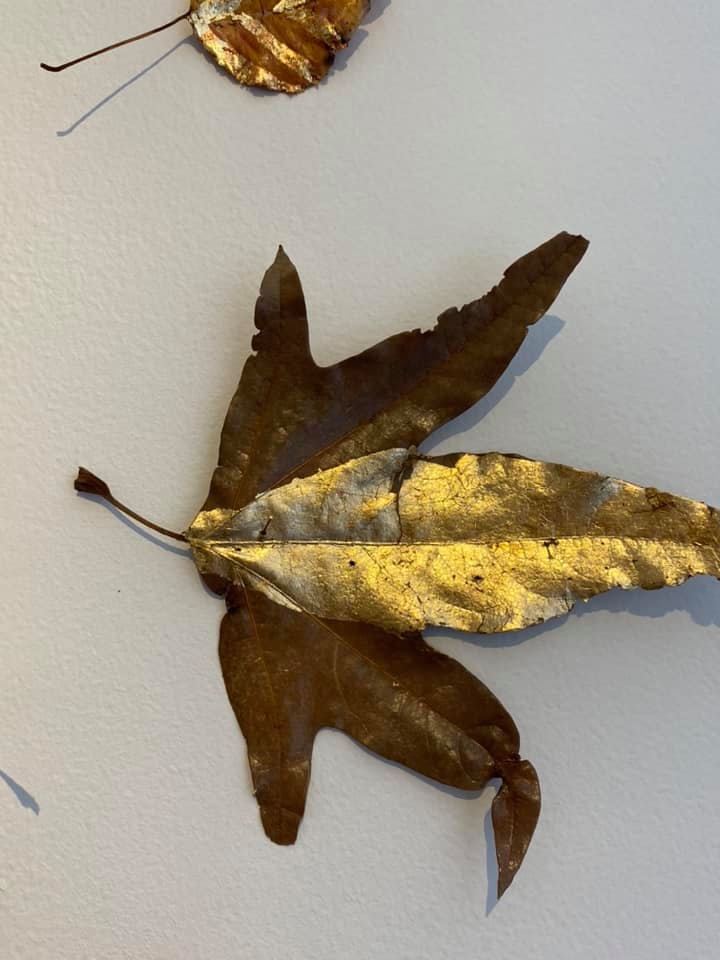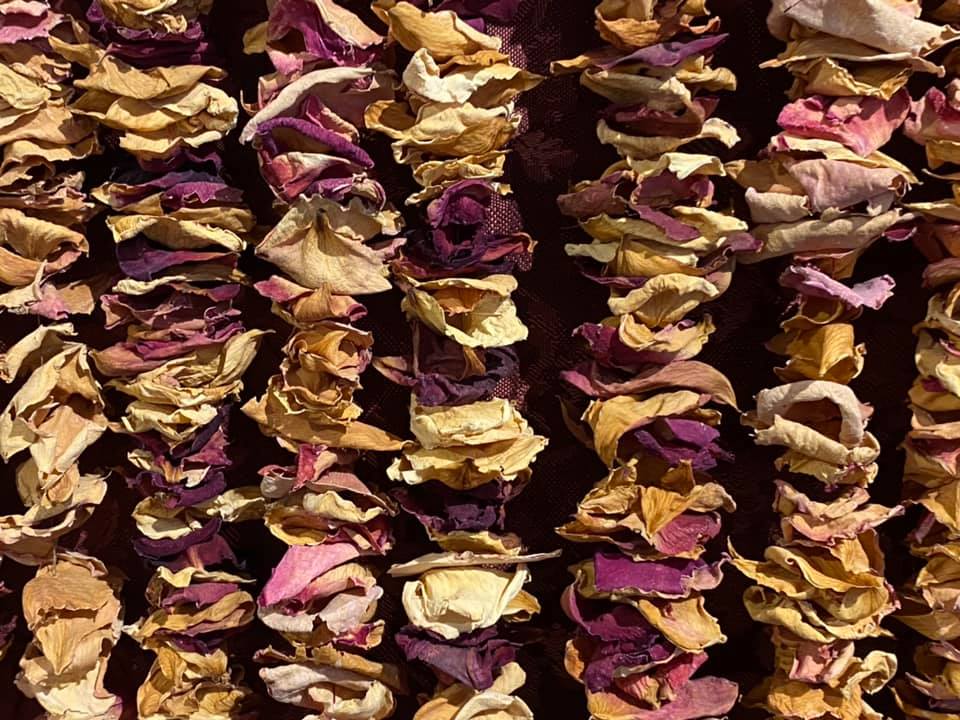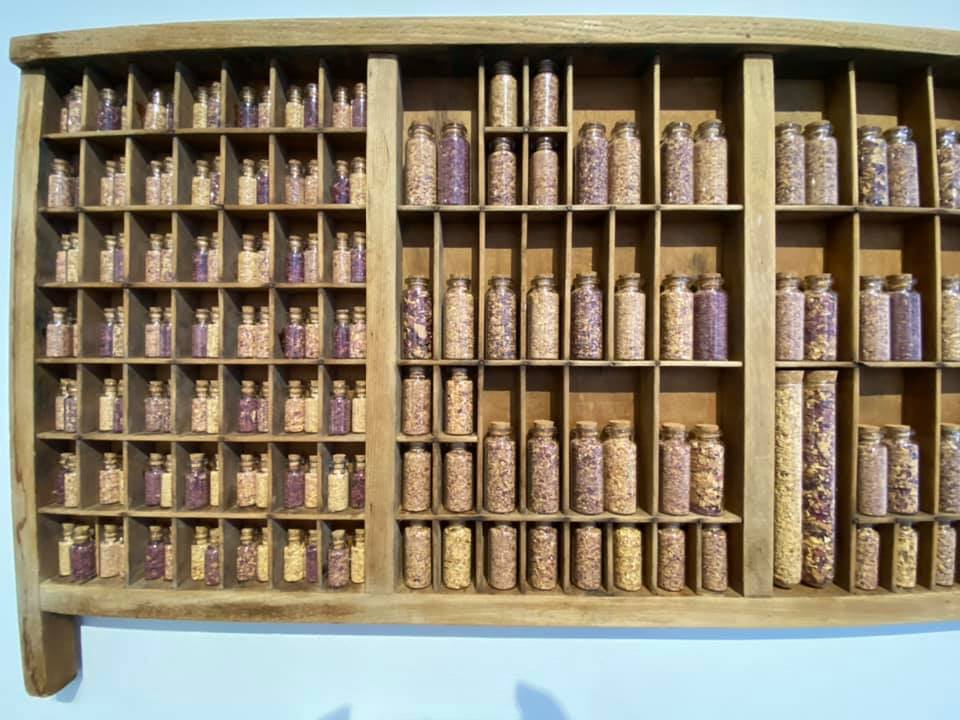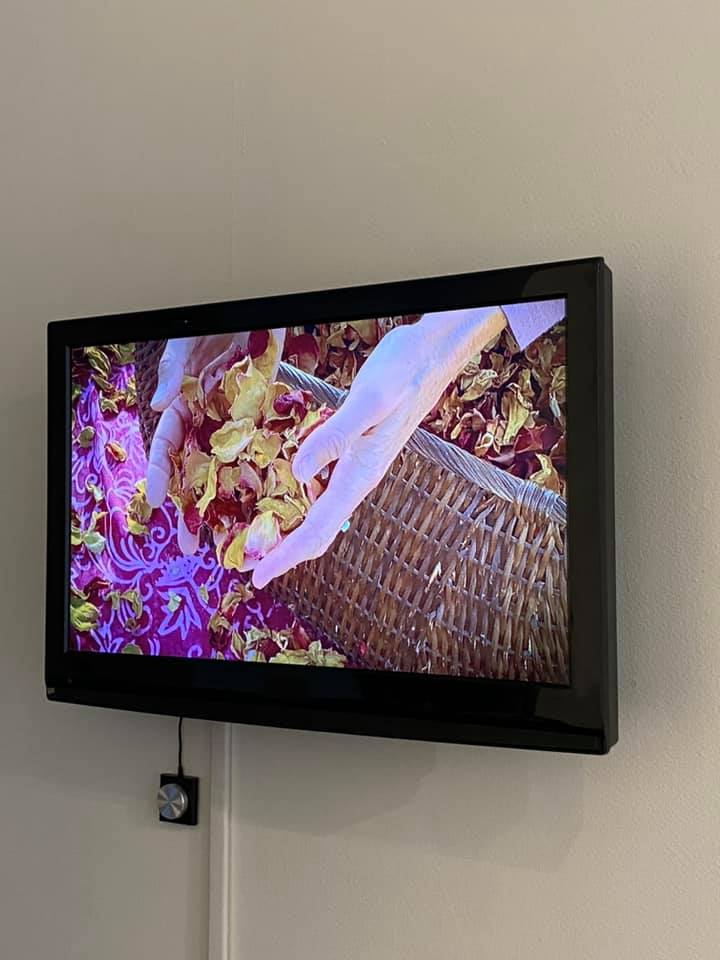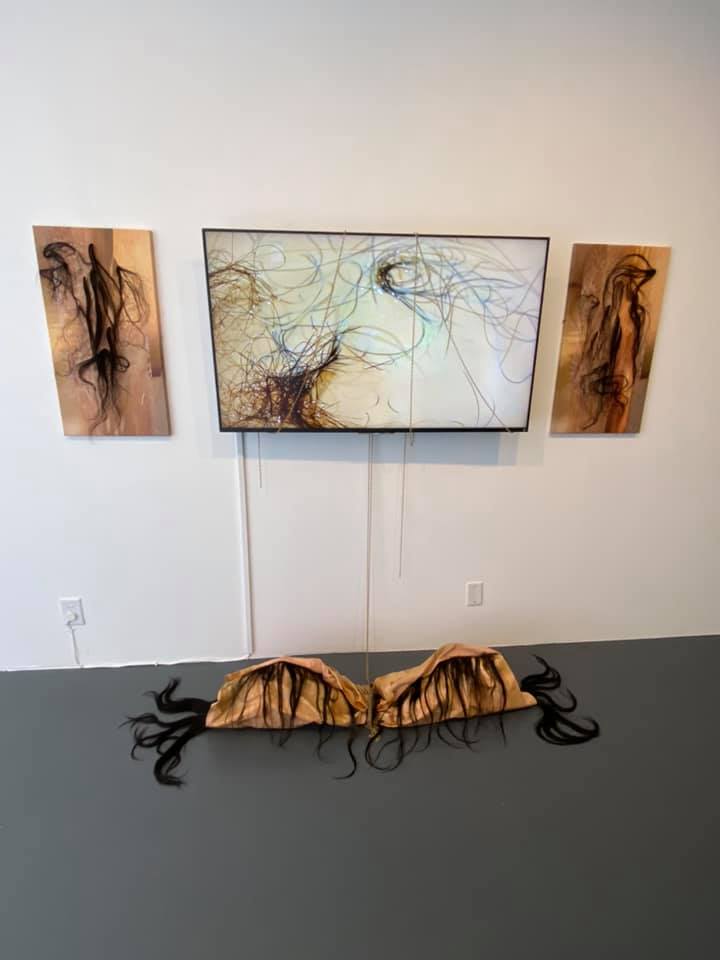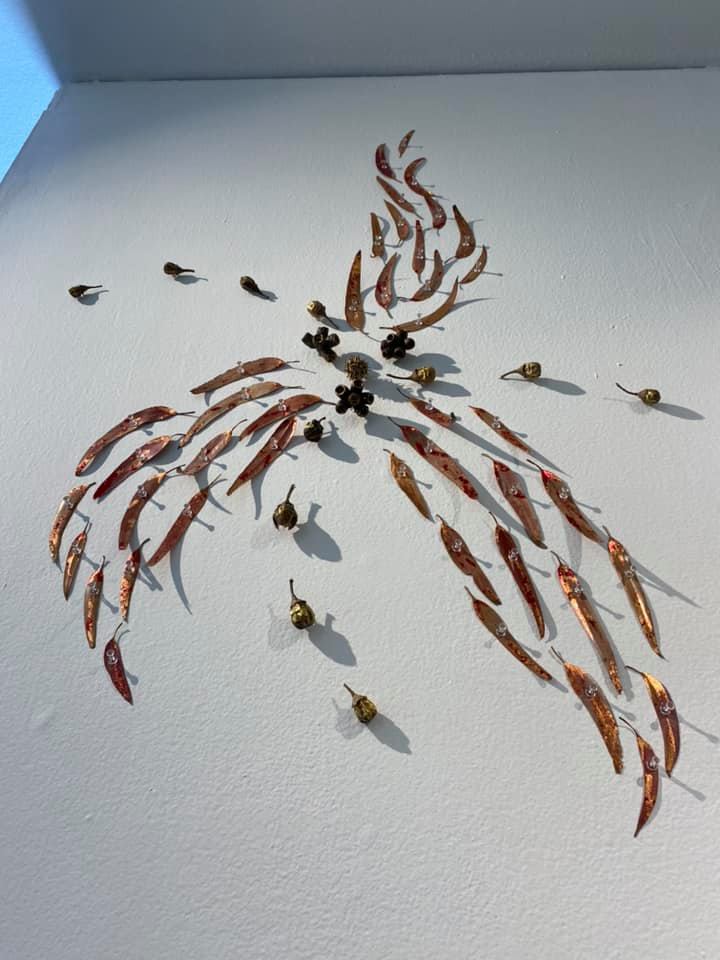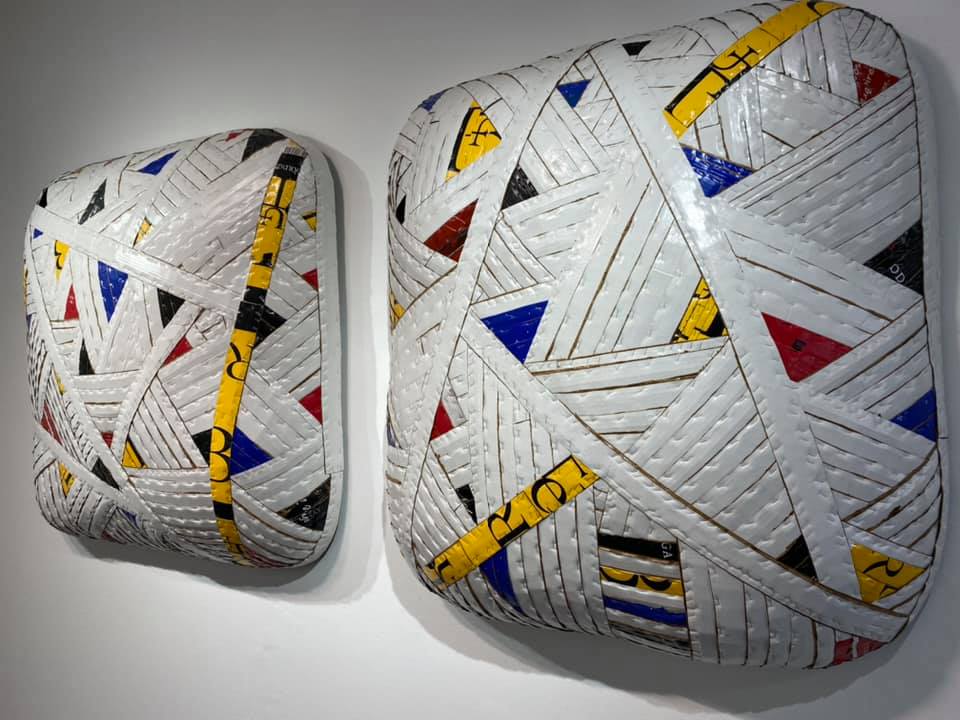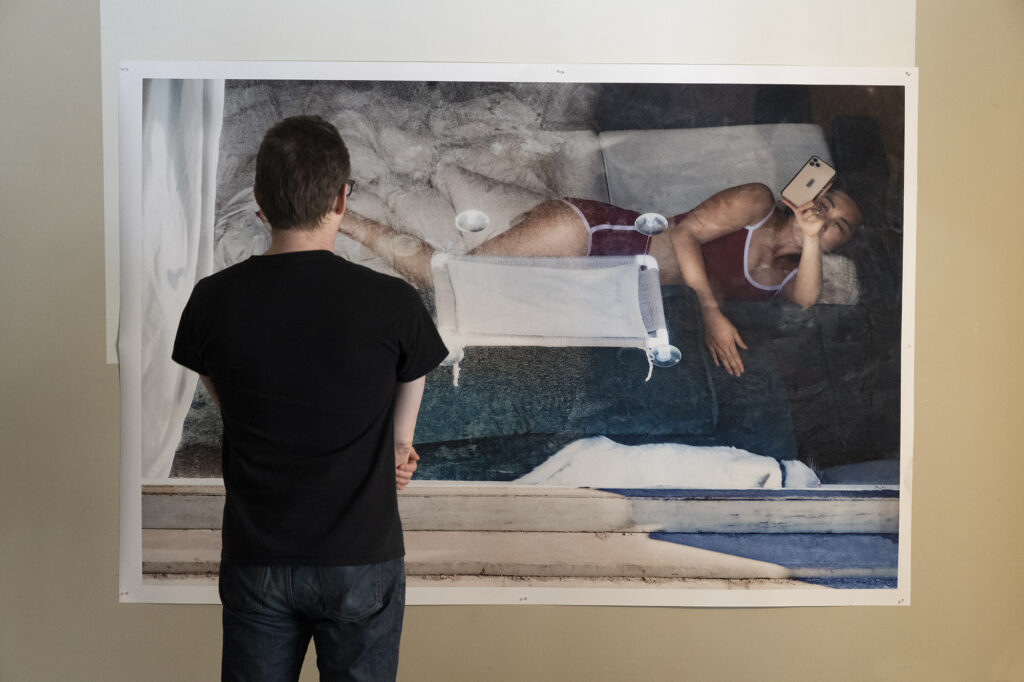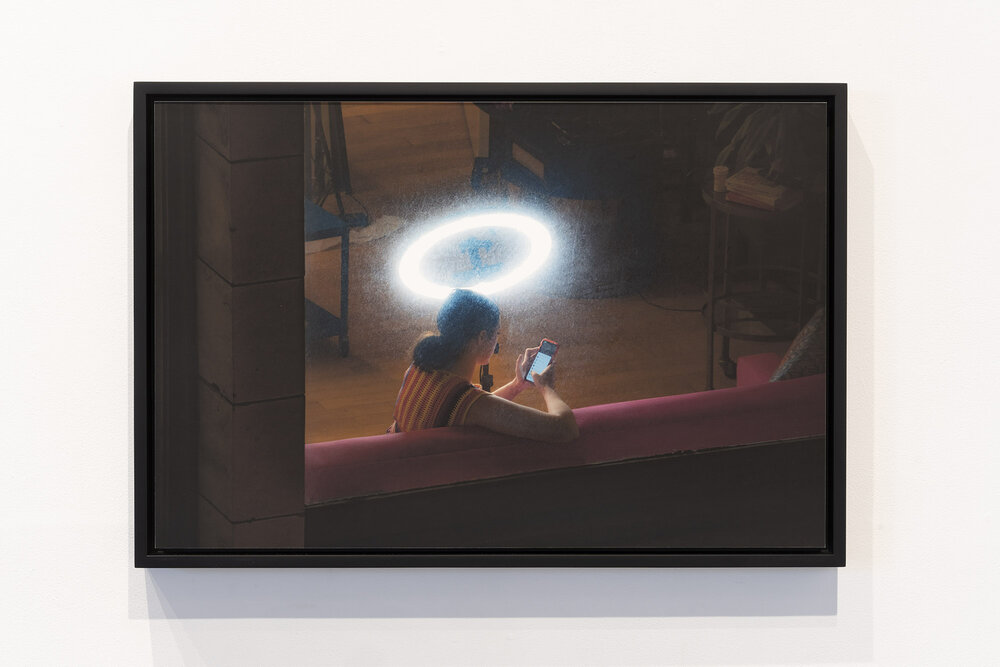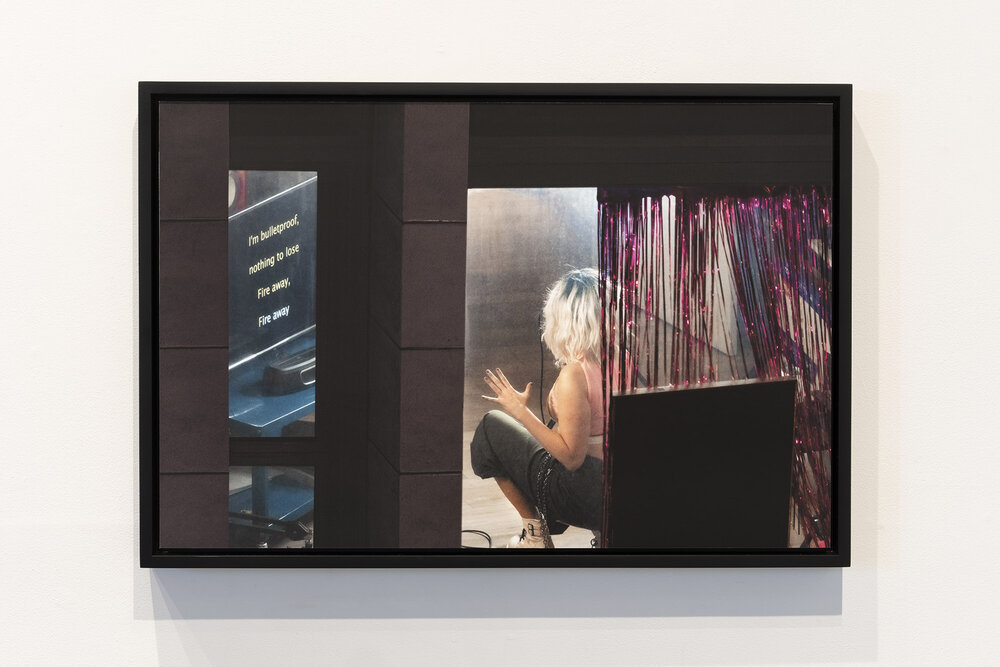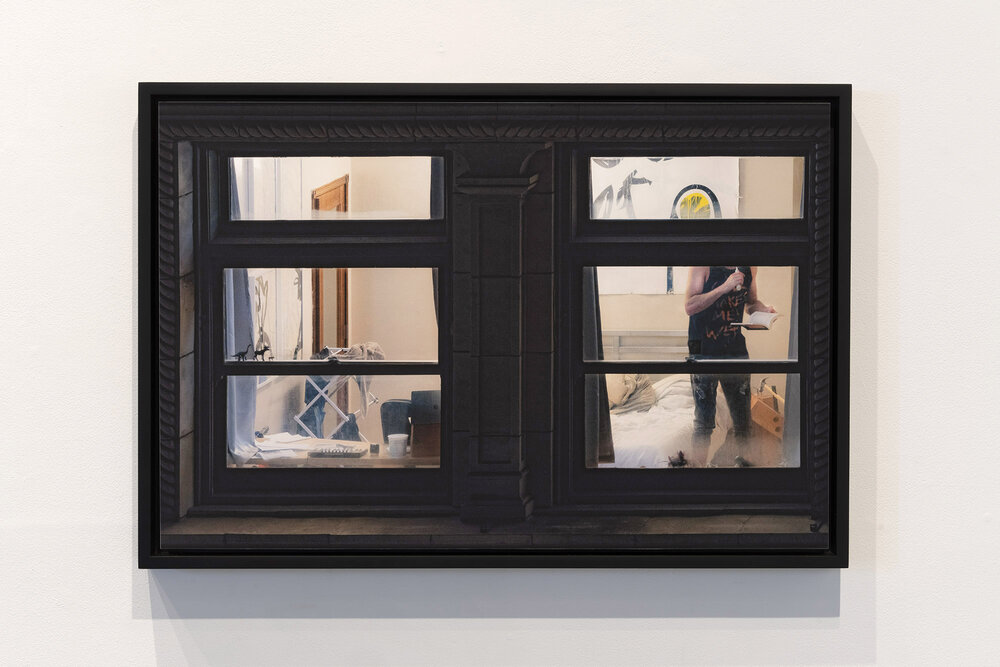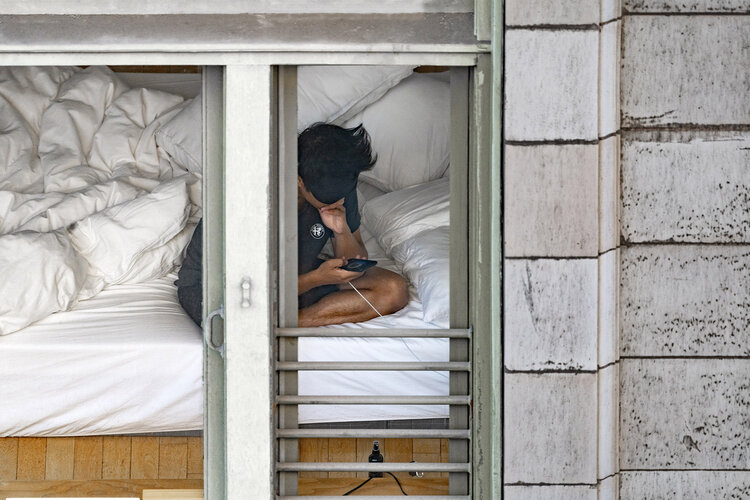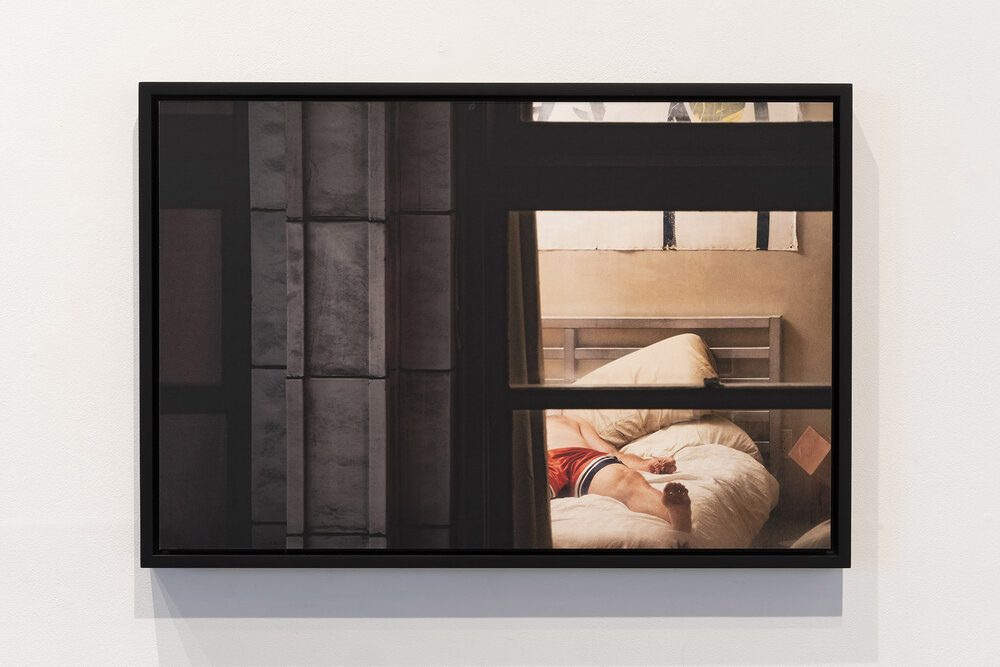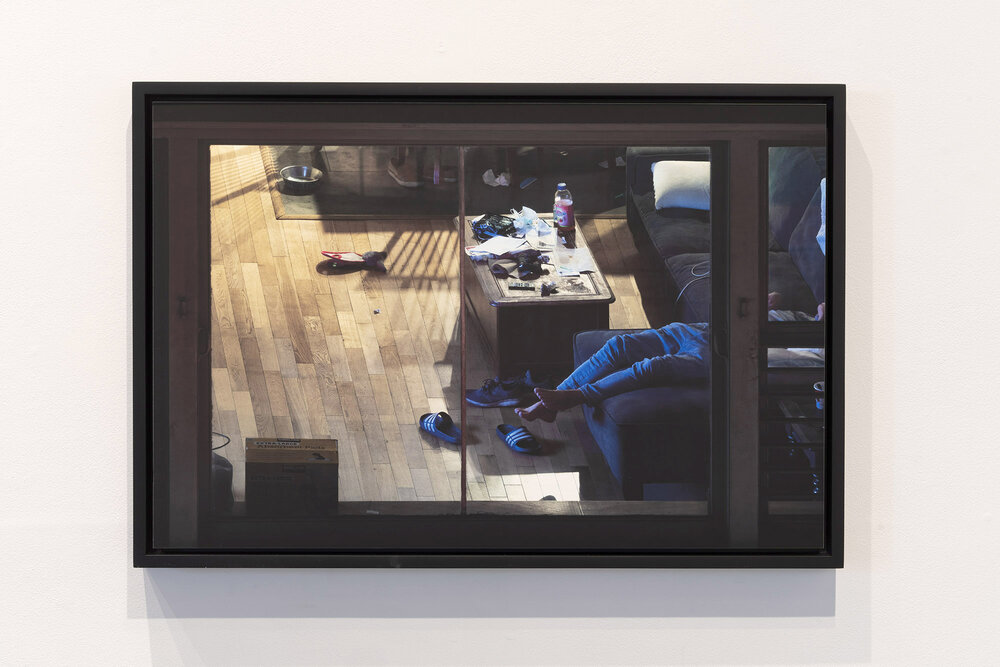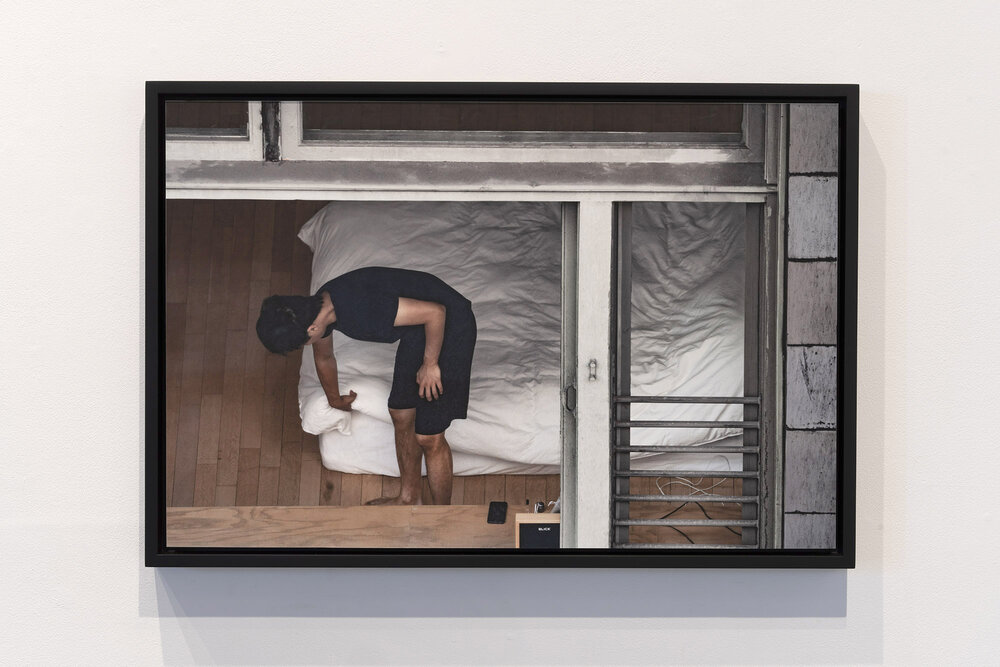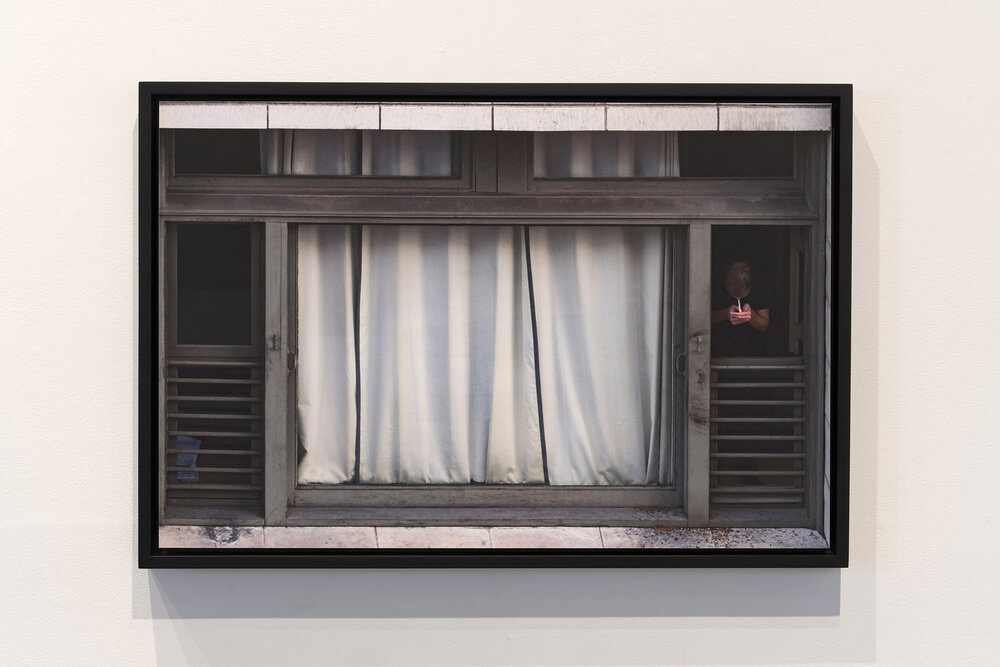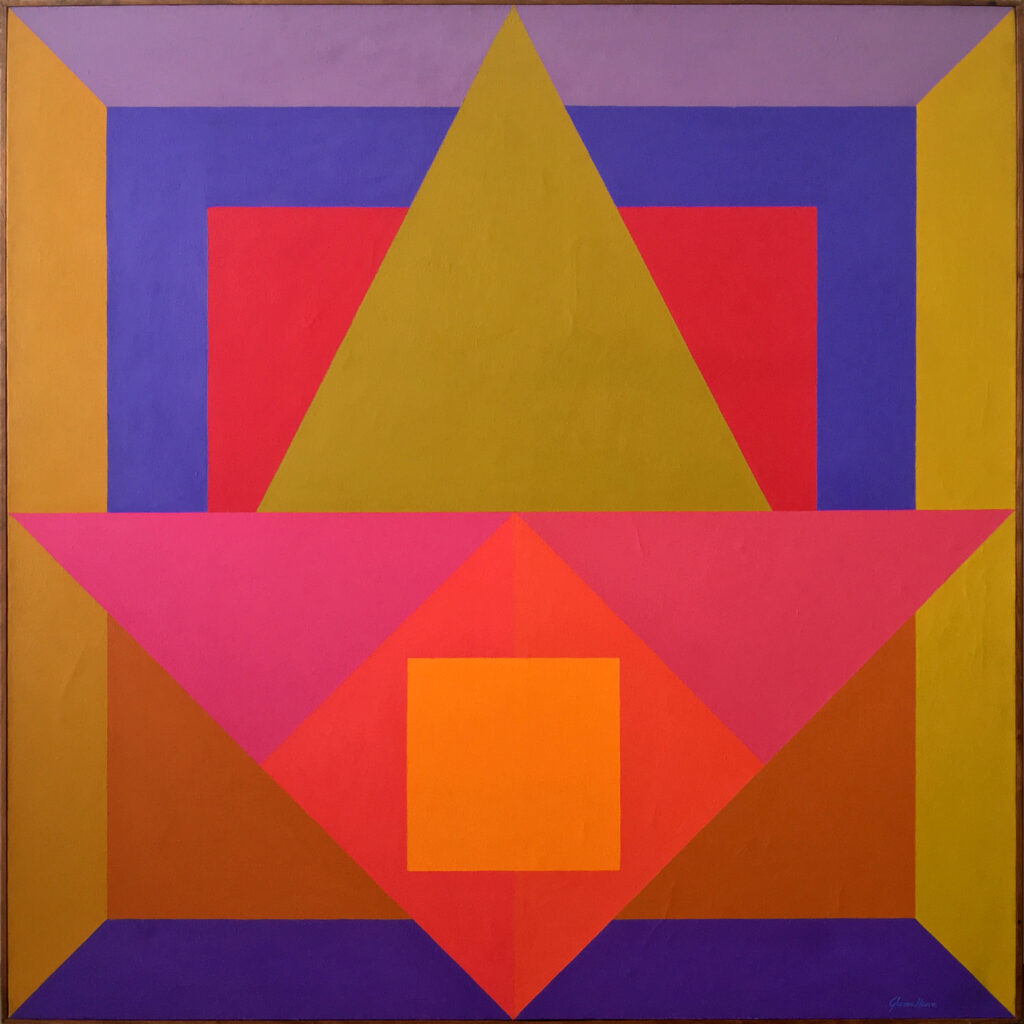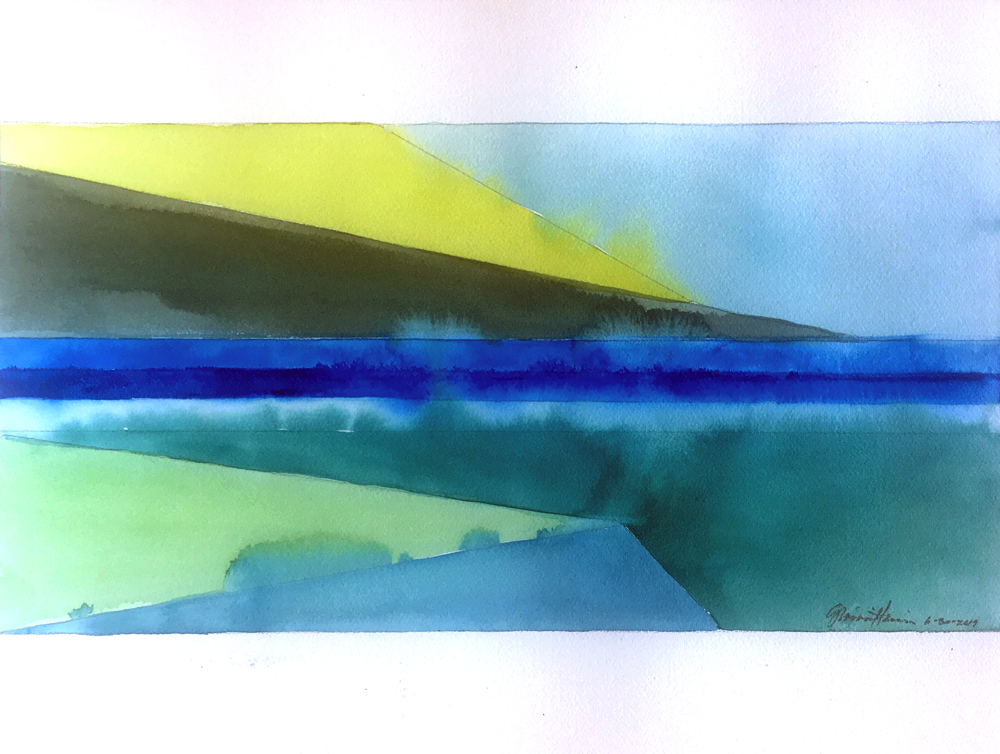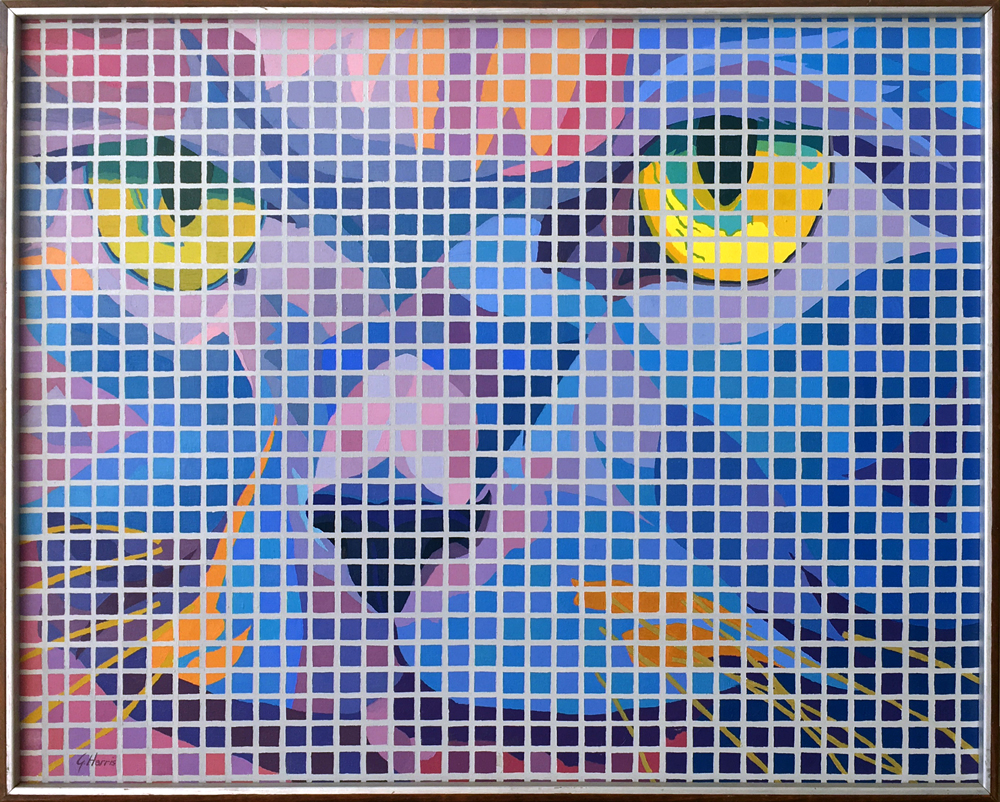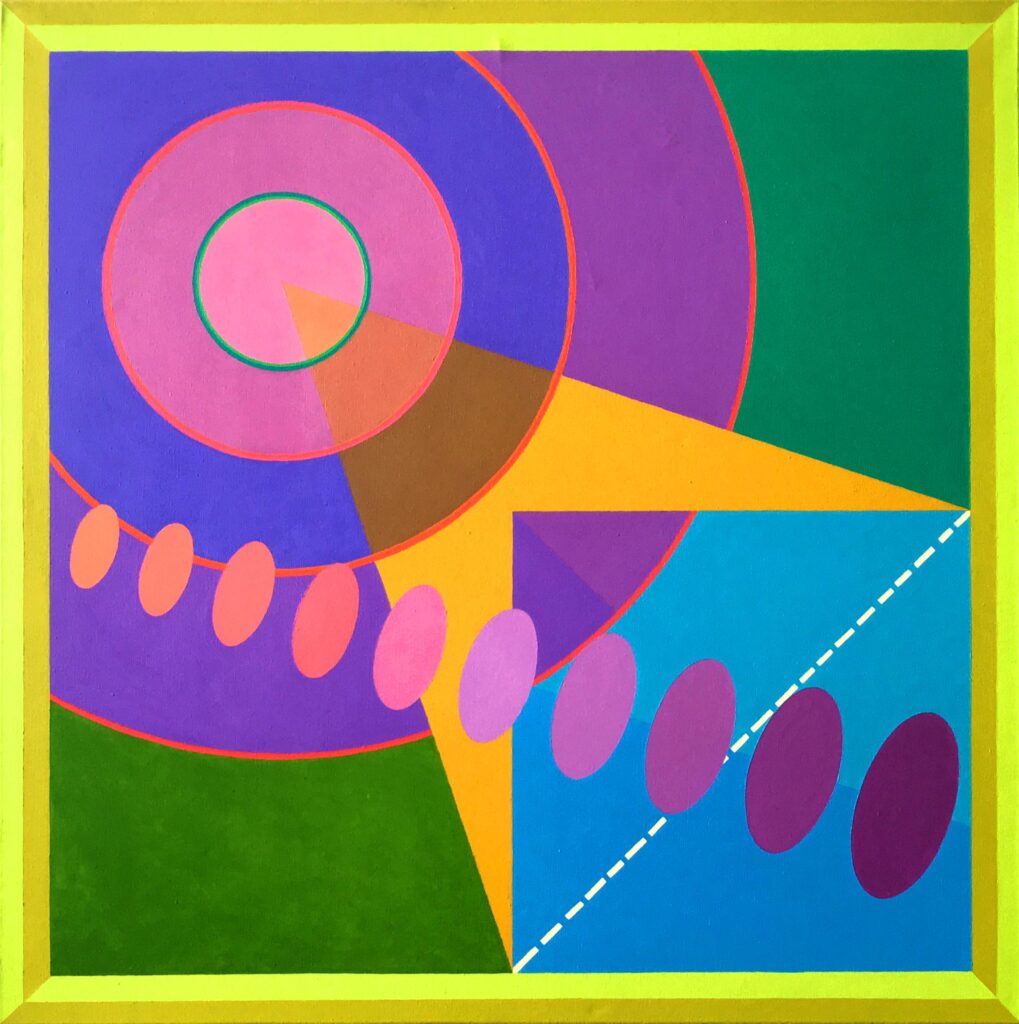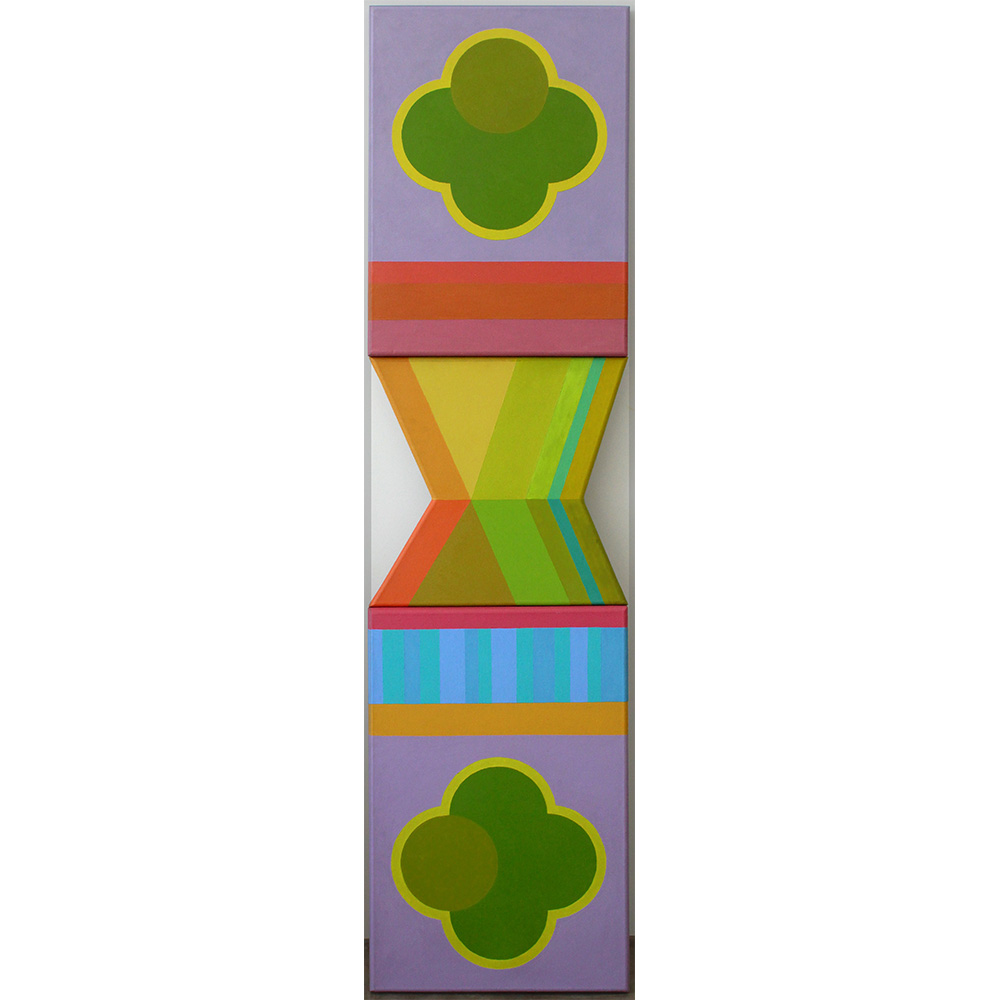
Scott Froschauer makes signs. But unlike a standard business or road sign, his are art – often meditative, always insightful. According to the artist, “The signs are an intersection of two ideas for me. One is the street art that I’ve been doing for years. The main idea behind that has always been to offset the alienating messages of advertising, and to place constructive and positive messages in our culture where there is a vacuum. The other idea comes from the large-scale public art that I create. Making large public art sculptures requires navigating a lot of bureaucracy.”
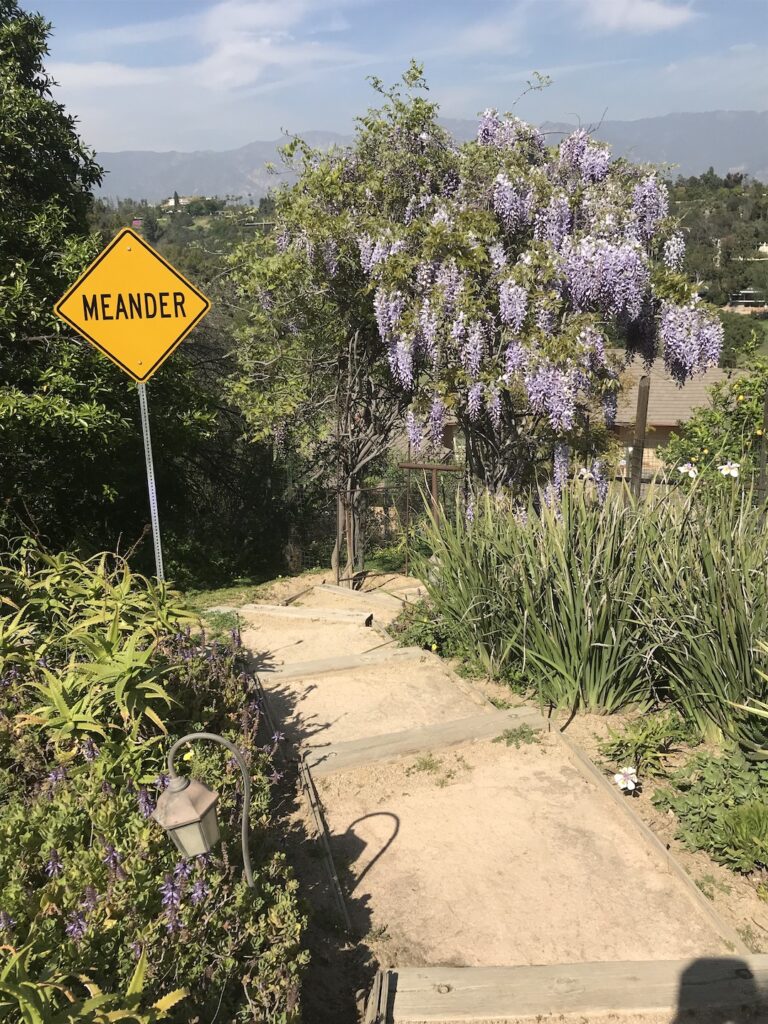
Froschauer explains that “If I wanted to put a sculpture of a giant duck in Griffith Park it would take a lot of time and money to make the duck, but it could take much more time and money to get the necessary approvals and engineering to satisfy the red tape involved. The street signs I create are fabricated and installed to Department of Transportation specifications.” In short, the city has already approved the engineering of these types of signs. “Every city already has ‘Stop’ signs in it, so they have a template for how to approve them,” he notes. “I’m hijacking that approval process to streamline the costs and timelines for the installation of my work.”
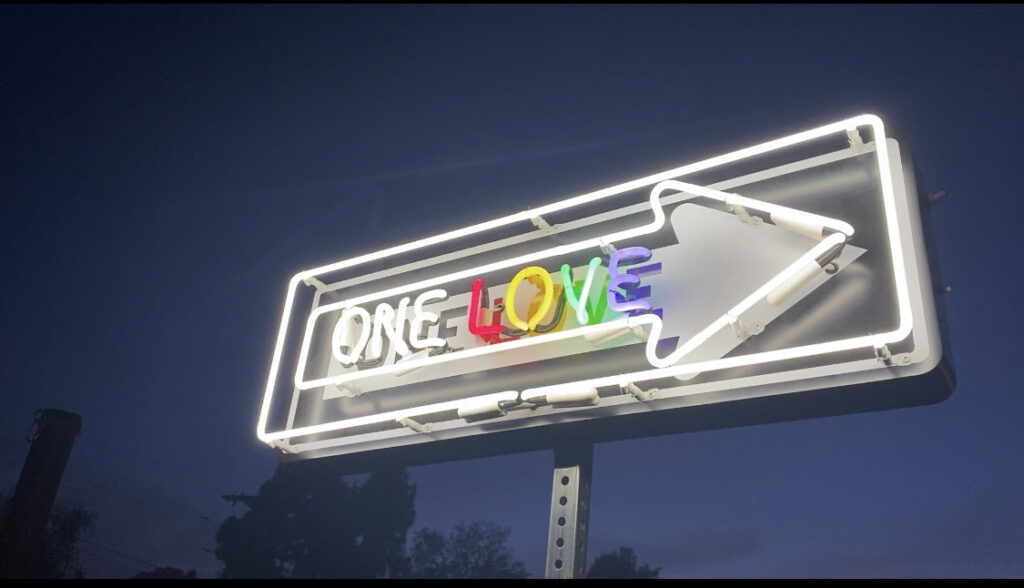
New this year, Froschauer has added neon work to his repertoire, a large amount of credit for which he gives to his gallerist, Wallspace Gallery’s Valda Lake. The large-scale works dazzle the median of Santa Monica Boulevard in West Hollywood, directing viewers to “One Love” and “Relax, UROK.”

“She found the opportunity and we presented the idea together to the City of West Hollywood,” he reports. “She had experience with fabricating neon through an amazing shop named SignographUSA, run by Terry Abrahamian. I have extensive experience in navigating the public art application process, and together we worked with the city to get those pieces in. I am so excited for that installation. I think it has to be the highest visibility work I’ve ever done. More people see those pieces every day than I can even imagine.”

Froschauer also has a large new work in the work-out room of the main student building at University of California, Irvine in Orange County. Resembling a massive green and white freeway sign, the 22-foot-long piece reads “All We Have Is – Now, All We Ever Had Is – Now.”

“I’ve had that design for a while and done it in several sizes. It’s actually the design of my business card. The words come from a Flaming Lips song. The first time I used those words was on a little card I made for Burning Man years ago. When I met someone new – which happens constantly at Burning Man, if we had a great conversation – which often happens at Burning Man, I would memorialize the meeting by handing the new friend a little card with those words on it. I continued to carry the cards around with me even after Burning Man was over, and I would give them out to people for different reasons. I think of the sign as one of those highway signs that tells you how far it is to a particular city. The name of the piece is ‘How Far to Now?’”
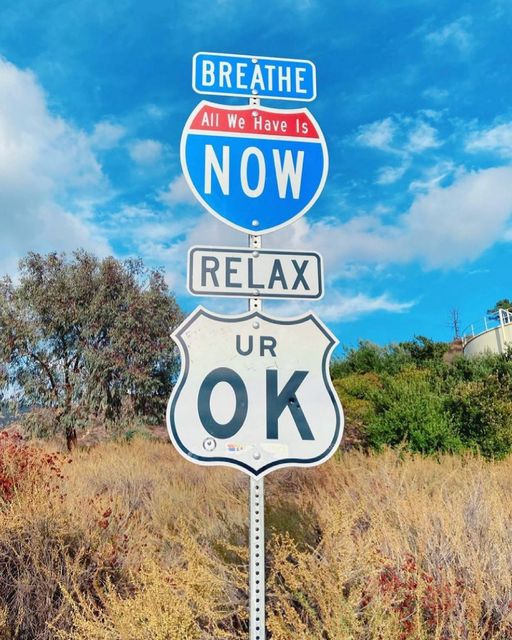
Also new for Froschauer: NFTS, which he terms “complex. I decided to get into them because I like understanding different ideas and I like experimenting with different art forms. One of the elements of my The Word on The Street series of street signs is that I create them in a wide range of formats in a wide range of price points. The huge neon pieces, or the installation at UC Irvine are all pretty expensive and out of reach for most people. Even the [regular] full-scale signs can be a stretch. But I also take the ideas and produce them as smaller signs, which are much more affordable and really a better scale for having in someone’s home.”
These pieces are available as pins, necklaces, shirts and stickers. “I’ve always seen the work as an idea that can be represented in a wide range of mediums. NFTs are an extension of that philosophy. I currently see my NFTs the way I see my stickers and they are priced accordingly. I’m still learning what the art form of NFTs is. It’s something new, not necessarily like anything we’ve seen before. It will evolve,” he says.
Froschauer offers an explanation of the burgeoning phenomena that makes far more sense of the form than any commonly given. “The way I explain it to my artist friends who are trying to figure it out, is that for many of us, it’s like when the first cameras came out. An artist might take the new technology and take a photograph of a painting, because that was something they knew was ‘good art.’ But photography is an art form of its own, and it took time for that to emerge. Right now, I think a lot of NFTs (maybe even my own) are just photographs of paintings. I learn more every day.”

Despite the new technology for Froschauer, from neon to NFTs, the pandemic itself has not made a large impact in the type of work he creates as an artist. “One thing I get from people a lot is that my work is so timely. Things like ‘We really need this, especially now.’ I think that was reinforced by the pandemic. But, to me, we’ve always needed it. I started doing this work a while ago and it was really about my own growth. It was about messages that I needed to hear,” he asserts. “The pandemic certainly gave us all opportunities to dig a little deeper, so that was positive for my work, and there were certainly some public art opportunities that came up because of the move to outdoor events.”
And speaking of outdoor events, he also exhibited in the outdoor High Beams show in the parking lot adjoining the Bendix Building in DTLA. The exhibition contained the work of a number of art collectives and gallery spaces; he showed with 515 Bendix, invited by Chelsea Boxwell. The walk-through/drive-through event was, he notes “a great forum for my street signs. I love getting my art out any way I can and I love working with other artists. I’ll be taking any opportunities I get for those kinds of shows. There’s currently a street art show under the connector from the 5 South to the 110 that is an amazing collection of artists. I was proud to be invited to join them for that.” That exhibition, which has not seen official promotion, Froschauer is happy to offer further details about to those interested in viewing.
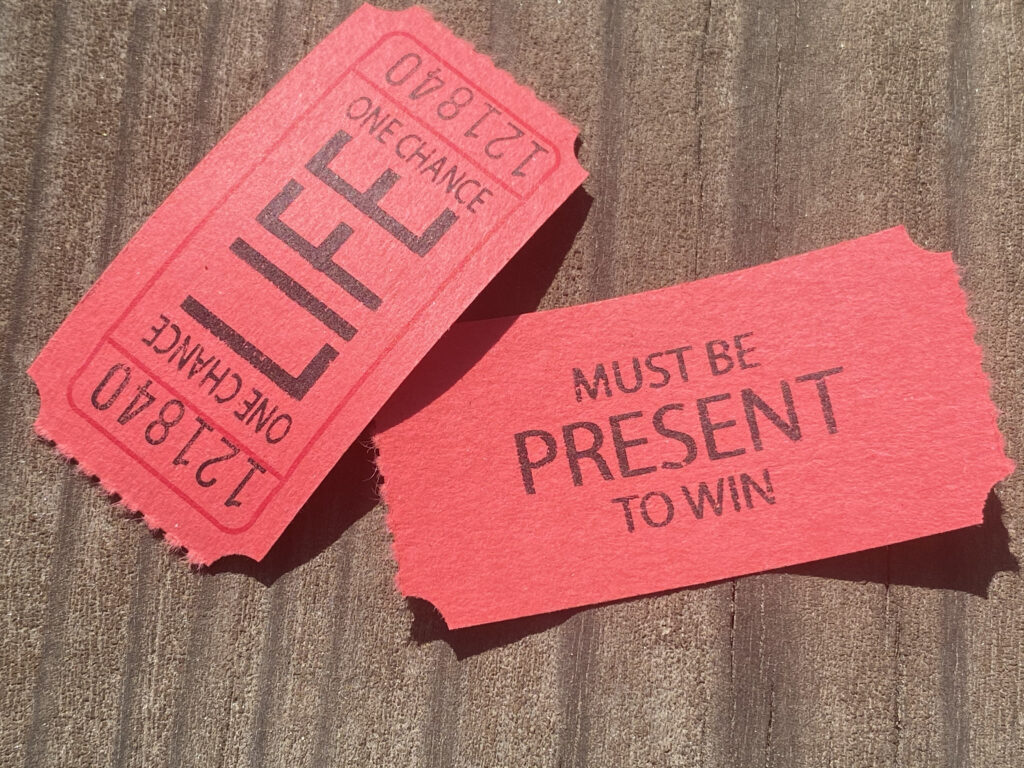
Inspired by the art and philosophy of others, and “by the countless people I see doing the work to educate the world about the complex hold our culture has on us,” Froschauer has a wide variety of work in the pipeline and applies to calls for art on an on-going basis. “I try and say yes to everything that comes my way,” he says.
And one of the things he always says yes to is the idea of gifting which is another outgrowth of his experience at Burning Man, which he has attended since 2004. “The idea is that everything is Gifted. When you barter there is an expectation of a return, but when you Gift there’s no expectation of a return, you just give and enjoy the process of giving…I always carry around things to gift, stickers, little cards anything that I think might bring some joy to someone. It’s funny when someone demands to pay me for gifting them something, they don’t realize that what I’m getting from the gifting process is better than the money.”
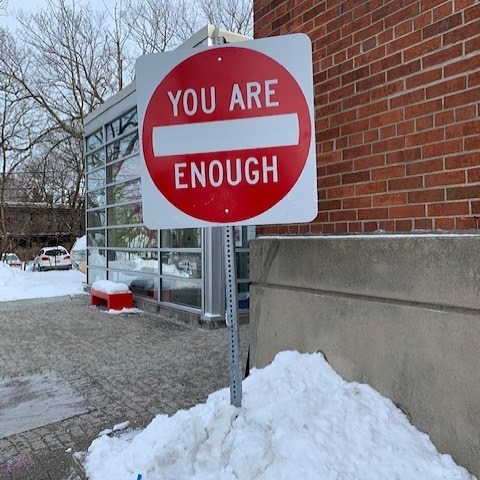
And one of the artist’s gifts that keep on giving are his signs – just right for these and all times.
- Genie Davis; most images provided by Scott Froschauer; West Hollywood Neon shots, Darren Stone







